January/February Nature Musings 2024

Hi everyone,
Welcome to the January/February 'Nature Musings Blog' - a chance to look back over these last 2 months and remember and honour what nature has shown us and continually teaches us.
The last 2 months have brought a lot of change to the immediate land around me....from the frozen ground mid January, to the flooded, boggy land throughout most of February. And in between the plants and animals slowly, very slowly awakening to the change in the Sun's length and warmth here on this land.
More than usual at this time of year I have found myself wanting to spend more time wintering than normal. A bout of flu at the beginning of the year left me feeling weak and wanting to hibernate more. More time for resting and feeling more bear like!
By the time February came into being I could really feel the change within the land - that beautiful awakening beneath my feet shown by the movement of young shoots piercing the soil heading up to the sun.....or for most of February, to be submerged by floods.
The transformation from winter to spring has been such a delight to see this year, a real awakening of colour in the wintered land, and the sounds within the countryside are such a delight as the birds start to awaken and sing their songs.
I have had many 'nature occurrences' throughout these last 2 months and it is always difficult to filter the ones that stay in this blog and the ones that stay in my journal. Hopefully I have picked the ones that resonate with you the most. I hope you will enjoy this journey with me...
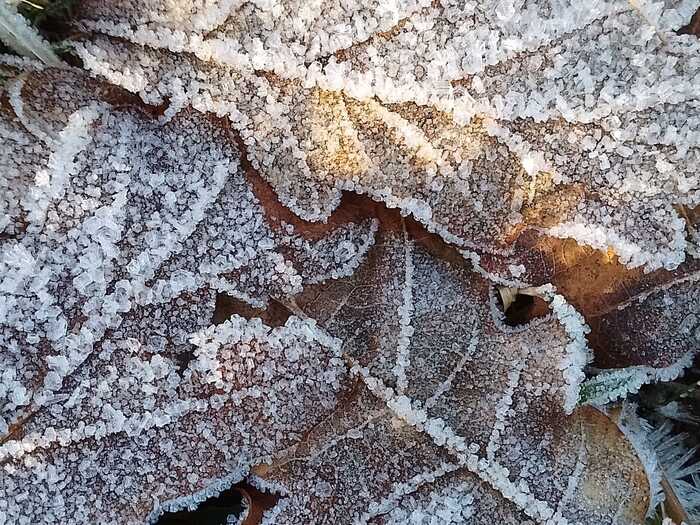
The icy conditions that came in for just a week near the second week of January brought with them some spectacular nature photography moments. The delight of hoar frost throughout the land.
The land held by the icy grip of winter was frozen, standing still, silenced for those few days. Not moving, the leaves that fell in the autumn felt like they were being held in time, suspended in the moment. No further decay, just held for all to see.
I became quite absorbed in the way the water crystals of ice had formed on these leaves, and on strands of grass and reeds above ground level. Blocks of ice standing tall along the veins of the decaying leaves, smaller icicles on the smooth surface - the beauty of hoar frost.
The word 'hoar' actually comes from the Old English 'hoary' meaning grey or white in appearance; the lovely way that the ice crystals form makes it look like white hair or a beard has grown over the land. The word 'hoar' was often used to describe a person of old age who had white hair and a white beard.
If we look at the science of how hoar frost forms.......simple frost occurs when the air is saturated with water vapour and the temperature falls below zero degrees Celsius. BUT when the surface temperature is also below zero degrees Celsius hoar frost occurs. So under cold, clear nights in winter, hoar frost forms when water vapour in the air comes into contact with an object that is below freezing. Water vapour would normally condense onto an object and freeze within that object, but with hoar frost the water vapour immediately freezes to form ice crystals. Hence the deposition of ice crystals on objects exposed to the freezing air.
The beauty of the land held by hoar frost is simply magical - and with the addition of the rising sunlight on the ice crystals makes for some amazing photography.
Frozen in space and time is an interesting concept. How many of us stand still? How many of us take time out of 'doing' all the time, to be still and feel held by the world around us?
In shamanic traditions we talk about being held within the void as a phase of enlightenment on our spiritual journey - the place of all possibilities and the place of consciousness. I have ventured to the 'void' many times - mostly placed there by a plant spirit teacher or animal ally. And the reason why I mention this is that I experienced a similar feeling when observing the hoar frost, holding still the world beneath my feet, allowing the physical to be held and yet the consciousness of that land free to move. Our physical bodies when held still, when we decide to sit and just 'be', allow our consciousness the freedom to move, to experience a wealth of possibilities.
There is such a wealth of experience to be gained by that stillness and silence of the void; of being held safely to allow our conscious state to expand. A great reminder for me, during this time, to take time out and engage in deeper meditation to allow my consciousness to expand.
"Into the void of silence, into the empty space of nothing, the joy of life is unfurled."
CS Lewis
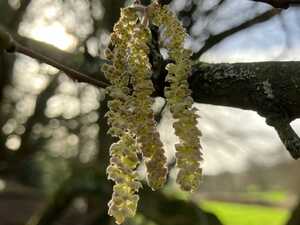
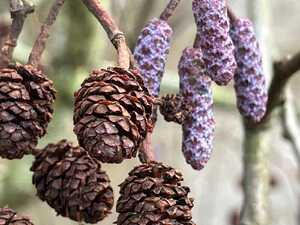
In the last 2 months the land has started to show signs of emerging; especially these last 4 weeks. Two trees that really stand out for me during the winter are both Hazel and Alder; Hazel for its lovely yellow catkins throughout winter, and Alder for the purple catkins becoming more vibrant as we move from winter into spring.
HAZEL is one tree that produces catkins from December onwards and is the simplest tree to identify, because of this, in winter. It is purely wind pollinated, with the male and female flower parts being separate but on the same tree. The slender, closely formed catkins of the male flowers start to open towards the end of January, ready and waiting for the female bud-like flowers with red stigmas (once fertilised these buds become the hazel nut in autumn). They can't self-fertilise though so rely on the wind to bring pollen from neighbouring Hazel trees.
I always feel this is a tree full of hope for the new season to come. A tree associated with wisdom and inspiration. In ancient folklore a Druidic tale tells of nine hazel trees growing around a sacred pool, dropping their nuts into the water to be eaten by salmon (a fish revered by Druids), which thereby absorbed the wisdom of the trees. The number of bright spots on the salmon were said to indicate how many nuts the salmon had eaten.
The wood itself has long been favoured to make staffs for Druidic use, in medieval self-defence, as staffs favoured by pilgrims, and for making shepherds crooks and everyday walking sticks. The wood bends easily which makes it ideal for weaving wattle hurdles for fencing, baskets and containers. The forked twigs of Hazel were a favourite for dowsers - divining water tools. And the fresh leaves in Spring were fed to cattle as fodder, in some cases helping to increase a cow's milk yield.
ALDER has both male and female flowers which really stand out at this time of year. The purple of the male catkins really stands out against a blue Spring sky. A tree of balance, found almost always with its roots in water, alongside our rivers and streams and boggy places. A tree, that for me, stands out more now than any other time during the growing season.
Despite having its roots submerged in water, this wood does not rot in wet conditions, in fact it becomes harder with submersion in water! This property of the Alder has been utilised since the Bronze Age where strongholds were needed over water, they would be built on rafts or piles of alder trunks.....in fact most of Venice is built on piles made of alder trunks!
The Celtic peoples of this land worked with the fiery aspect of Alder - it burns with a fierce heat, ideal for forging weapons. Throughout all Celtic cultures, from Ireland to Gaul (modern France), the alder tree is viewed as symbol of life-giving forces:
- Alder trees grow very quickly and have the ability to quickly regenerate after being cut down or damaged.
- Alder trees are very hardy and adaptable. So much so that botanists call them “pioneer species” since they are among the first types of vegetation to take over an inhospitable land. They also have a fertilising effect, making the surrounding soil more fertile for other plant species.
- Alder oozes a deep red sap, when cut, which is very similar in colour to blood. This gives the appearance that the alder is bleeding. Since blood is the most powerful symbol of life, this property of alder trees to bleed red has also made them a symbol of life.
Two trees that provide a wealth of powerful connection when all others are sleeping. Go and find those purple and yellow catkins of Alder and Hazel and marvel at their beauty and message they have for you at this time of year.
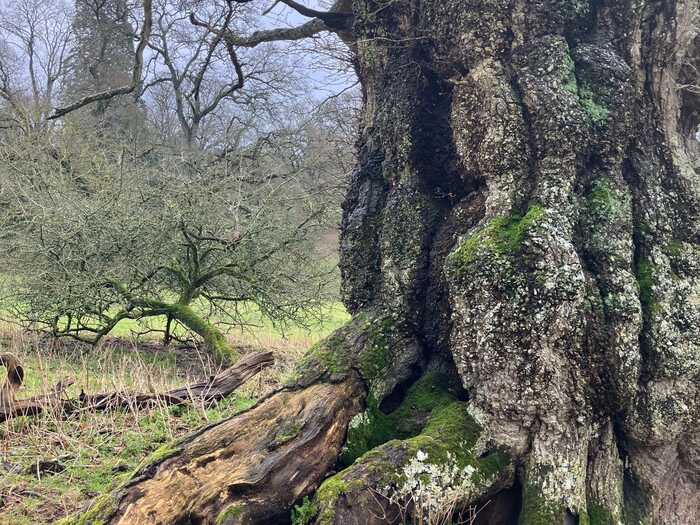
One of the places I love to visit, and have started to visit more often now, is Knightshayes Court, near Tiverton, owned by the National Trust.
Going back 25 years, when I first moved to the south-west, I was having to transition into a new place (from the south-east), to a place where I had no friends, no job and struggled with my mental and physical health because of this. I decided to volunteer at Knightshayes Court as a way of getting myself out of the house each week and meet new people; I needed to be doing something and be part of something.
It worked! I stayed and worked as a volunteer and paid worker for the gardens department for 3 years. And I absolutely fell in love with the trees on this estate.
Roll forward the years and I still love meeting these old friends and spending time with them. For me the best time to visit the majestic Oaks, Beech and Sweet Chestnuts is winter time. Time when they show their bare bones and you can appreciate the amazing lichen, moss and fungi that live, and are such a part of, these amazing beings. I love to spend time observing the detail of the colours and textures of the bark, of the many different mosses that inhabit the lower sections of the trunk, and the many different species of fungi that have found their ideal niche within the folds of the older tree trunks and limbs. On some occasions I have also spotted a Little Owl within the Oaks, normally looking rather disgruntled that I have invaded its space, so I normally apologise and back off!
Some of the Oaks on the Knighsthayes estate are classed as veterans - with some Oaks over 6oo years old. Imagine having lived on this land for that length of time; of the things you would have witnessed and felt through your roots and branches. So much has changed over the years and these magnificent species are a part of that history. The many cultural changes of land use, farming practices, of environmental conditions too, and they have survived.
Spending time with these trees brings a real sense of stability and grounding. Spending time with any tree is of such value for us (as science has proven and continues to prove), but allowing ourselves to deeply connect with a more-than-human being with such wisdom is simply profound.
One of the many things I love to do when I visit these trees is to sit with my back to one and close my eyes and really feel into the roots around me so I feel that stability. Then I concentrate on listening, and only listening........listening to the wind through the branches and the different sounds it makes. Listening to the many bird songs that inhabit the tree I am resting next too and learning their calls. And listening to how my body is responding to just'being' still. The sighs and deepening of my breath are a sure sign that I am responding to the trees call.
I have many favourite trees at Knightshayes......they have called to me over the years and I am always welcomed back as an old friend. If you visit Knightshayes Court in the next few months, go and find a tree to explore and befriend.
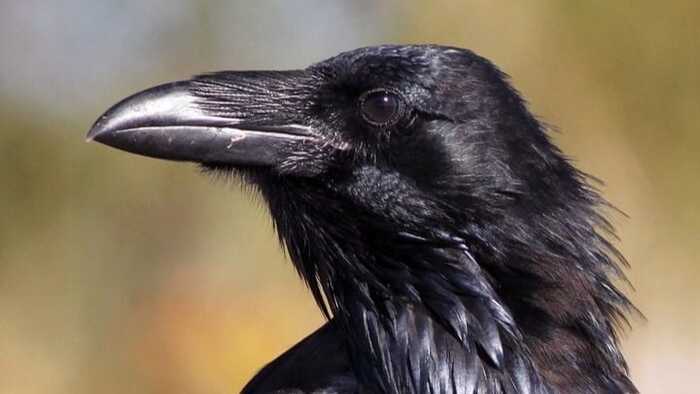
Or is it an Unkindness of Ravens? Or simply a Treachery of Ravens? A lot of the collective nouns for these amazing birds come from medieval folklore and mythology where the Raven was often associated with bad luck, death and got a reputation for being a trickster.
The Raven is the largest member of the Corvid family….preferring solitude and wilderness. They are highly intelligent, make and use tools, and can solve complex problems. Intelligent, adaptable, ingenious and mischievous. Bold birds and extremely noisy when disturbed. Curious creatures and will easily snatch shiny objects. Having trained 4 of the Ravenmasters at The Tower of London, I know only too well the thieving trait of Ravens and the ransacking of visitor rucksacks for those shiny foiled sandwiches!!!
Ravens also play with each other as well as with other birds and animals….they also like to fly upside down! And roll in the snow!!
Ravens are the most intelligent of our Corvid family, residing here in the UK; with plentiful numbers here in the south-west of England. They have wedge-shaped tails and long fingers on the ends of their wings (Crows have square tails and rounded wingtips). They are often seen either singularly or as a pair, never in groups, whereas the Crow is almost always seen in a group. Ravens 'croak', Crows 'caw'. Ravens are closer to solitude, to the wilderness, keeping company with the clouds, hawks, buzzards, and wolves (once on our ancient land).
The Raven is known as the Keeper of Secrets, Keep of the Mystery of the Land, and is a messenger between Spirit Above and the Earth Below. Ravens have come to symbolise death, bad omens and bad tidings through our folklore. Always seen at the scene of a battle picking their way through the corpses.......but perhaps their intelligence is being undervalued? They have watched us for many years, learning about us and how we give them opportunities to survive. In battle there is always death - fresh pickings for hungry corvids. So they watch and wait for the next fight, the next gathering of humans ready to do battle, their next food!
Interestingly they can remember the faces of humans and interpret our facial expressions. How many of us know the different faces of the Ravens or other animals in the wild? Ravens are the 'bird watchers', while people are their 'birds'.
On the land I rent in the Blackdown Hills I am constantly met by a croak of one Raven, only to fly over several minutes later with its mate and I then get two croaks as a greeting. They stay in and around the woodland on the land and are such a delight to hear and see.
The male started his courtship dance early this year, from beginning of February. Flying just in front of the female and doing his spectacular rolls and then sounding a 'doink' as he came out of the roll. I have seen male Ravens do this dance for several hours before the female they were impressing decided they had done enough to impress.
Those shiny black feathers for me area sign to welcome in the 'void', the place of all possibilities, a chance to confront the hidden, unconscious side of ourselves (our Shadow)...allowing the death of the old self, and the rebirth of a new self.
Raven's were valued as protectors by some indigenous peoples of this land and in Europe. A wondrous protector, teacher and guide for those of you partaking in a spiritual path through life. For me, they represent protection on the land where I work...when they call I thank them.....I thank them at the end of the session and they call back.
Look out for these amazing birds in the sky...listen for those croaks and doinks!!
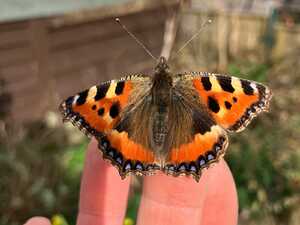
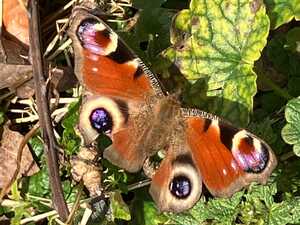
Two amazing Butterfly's emerging within a couple of days of each other in the rare warmer and drier (!) spell in February.
The Small Tortoiseshell Butterfly was sitting directly outside the back door on the floor and knew I had to move it for fear of being trodden by dog or human! I bent down to allow it to stand on my fingers and as soon as I moved into the sunlight it opened its newly formed wings - so splendid in the morning sun. I just could not believe the intricacy and depth of colour on its wing. I was transfixed for some time admiring the complexity of the fine detail on this Butterfly.....words just can't express the beauty that was standing very gently on my fingers.
And a couple of days previous to the above emerging I found a Peacock Butterfly enjoying the sun's warmth on the side of a green bank.....again so beautiful and vibrant in its colouring.
A chance to behold such beauty whilst moving slowly out of winter has brought welcome relief and hope for the months to come. And what welcome energetic symbolism they bring - one of transformation, hope and rebirth...and I have been doing a lot of that these last 2 months!!
The days are getting longer, something I notice more with having to put the birds to bed in the evening. Lighter evenings means warmer days to come.....but slowly, we all need to get used to, and integrate this change.
Thank you for reading my nature musings for the last two months. I would love to hear your connection stories with the natural world, and the plants and animals that have helped you too - send me an email or respond via Facebook.
Look out for the next Nature Musing Blog which will appear in your email boxes from end of April. A list of what is going on re workshops, talks, etc., will appear as a separate 'newsletter' which should already have flown into your email boxes.
Enjoy your own nature musings throughout March and April...and look out for the newly emerging Butterflies too!
Nature Blessings,
Karen x
To learn more about Nature Connection for Well‑Being,
sign up to receive
Dr Karen’s Nature Musings and Newsletter
Keep up to date with information on new courses and other programmes. Register your details below and you will receive an email link to a FREE Grounding Meditation.
Posted on February 1st 2024
